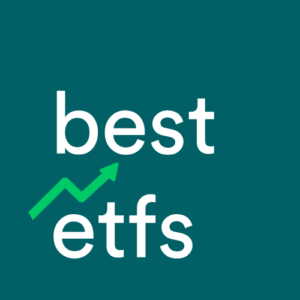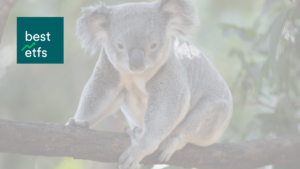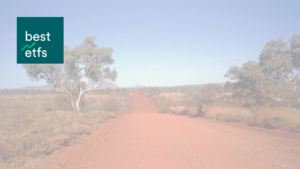So what do they do?
The VanEck MVA ETF provides investors with exposure to the Australian property market by investing in a portfolio of ASX-listed property companies and real estate investment trusts (REITs).
The BetaShares QRE ETF provides a targeted exposure to some of the largest companies in the Australian resources sector and aims to track the Solactive Australia Resources Sector Index.
If you want to go beyond the basics with the MVA ETF you can learn more about it by reading our free review.
Obviously, an easy way to analyse ETFs like QRE and MVA is by using quantitative methods and judging the fees and past performance (note: past performance is no guarantee of future performance).
At Rask Australia and Best ETFs, our team scores ETFs and funds based on the management fees and we take into account the buy-sell spread and other costs. We’ll then compare these ‘all in’ fees and costs across sectors, strategy types and providers to get a sense of fees across the entire market.
To make this article easier to digest, we’ll just study the fees or ‘management expense ratio’ (MER). Using data for July 2022, the MVA ETF has an MER of 0.35% while the QRE ETF had a yearly fee of 0.34%. So, QRE wins on this metric. Keep in mind, a more informative metric to know is the fee quartiles that these ETFs find themselves in (note: quartile 1 is best). Meaning, we take all the Australian shares ETFs in our database and divide them into 4 quartiles, based on their fees. For example, any ETF which has a fee below 0.3% would be considered in our first (best) quartile.
Show me the money
It’s time to study the track record. Keep in mind, performance isn’t everything — and past performance is not indicative of future performance. It’s just one part of a much bigger picture. The reason we say performance is not everything is because of volatility of financial markets and the economy from one year to the next. Some ETFs and funds can put in a compelling return one year just to generate subpar returns the next time around. That’s why we prefer three-year or seven-year track records over one-year track records. It can smooth out the temporary performances caused by external factors. Both ETFs have achieved our three-year performance hurdle. As of July 2022, the MVA ETF had an average annual return of 0.22%. During the same time, the QRE ETF returned 10.54%.
Now we need to scrutinise the issuer or provider of the ETF. There are too many factors that go into our internal scoring of fund providers to detail here — here’s the quick version: As you guessed, the issuer of the MVA ETF is VanEck. VanEck ranks highly for our scores of ETF providers and issuers in Australia. Our team considers VanEck to be one of Australia’s leading providers of specialised ETFs and funds for retail investors and advisers. QRE’s provider is BetaShares. Betashares ranks highly for our scores of ETF providers and issuers in Australia. We believe BetaShares is one of the leading providers of index and non-index style products to retail investors in Australia.
Next steps
Be sure to visit our free ASX MVA review or ASX QRE ETF review.
For us, the QRE ETF rates greater against our internal scoring methodology, but only just.
We hope this article helped you analyse ETFs. Don’t forget, there’s a lot more to investing well than what we just outlined (risks, diversification, other potentially better ETFs, etc.). Our analyst team at Rask Australia spends months looking at new ASX investments (it’s our day job!). To make your life easier, you can get the name of our team’s top ETF pick for 2024 in a free report. Keep reading to find out how to get our analyst’s report emailed to you right now…





